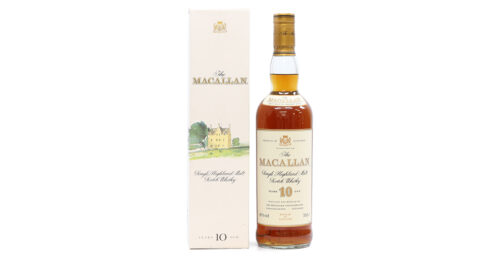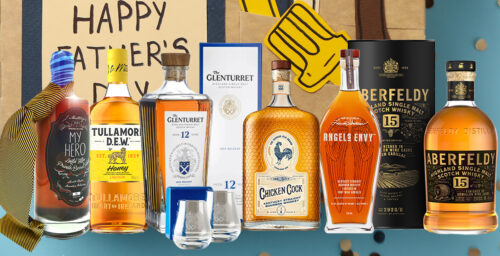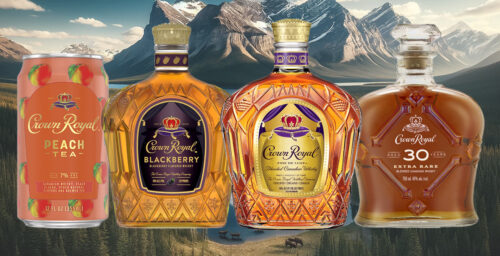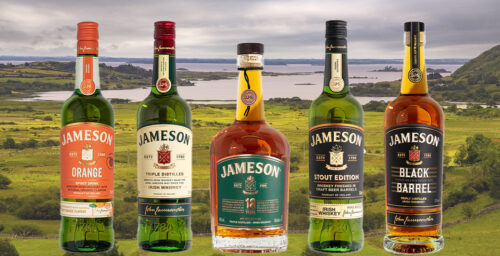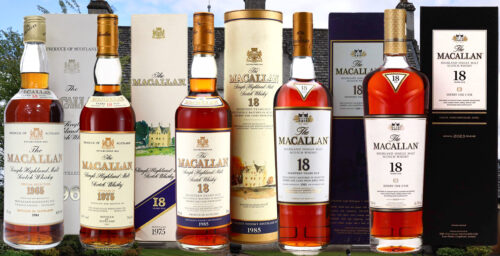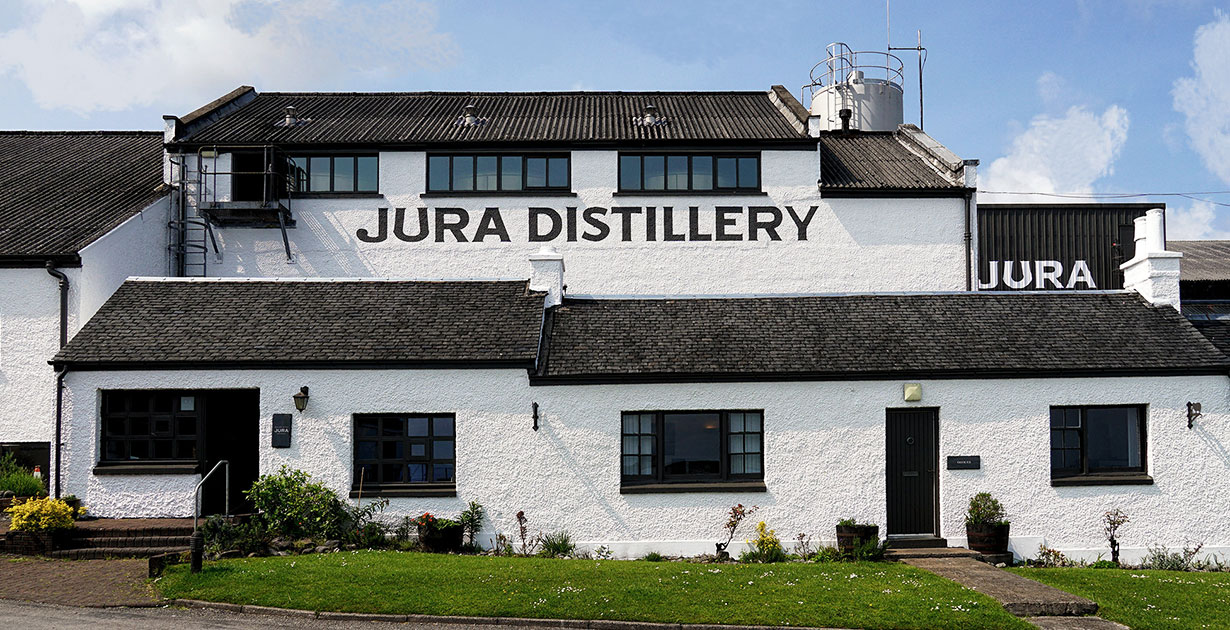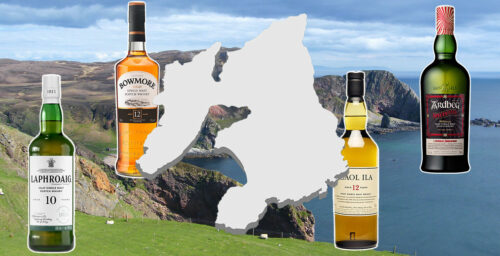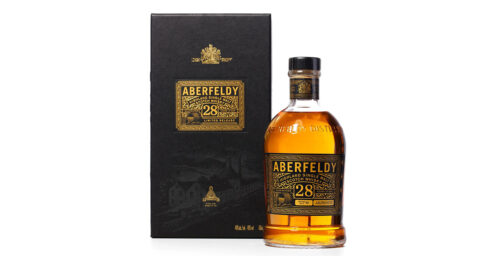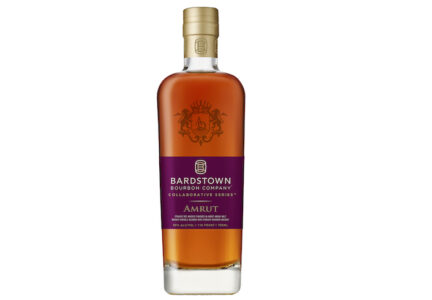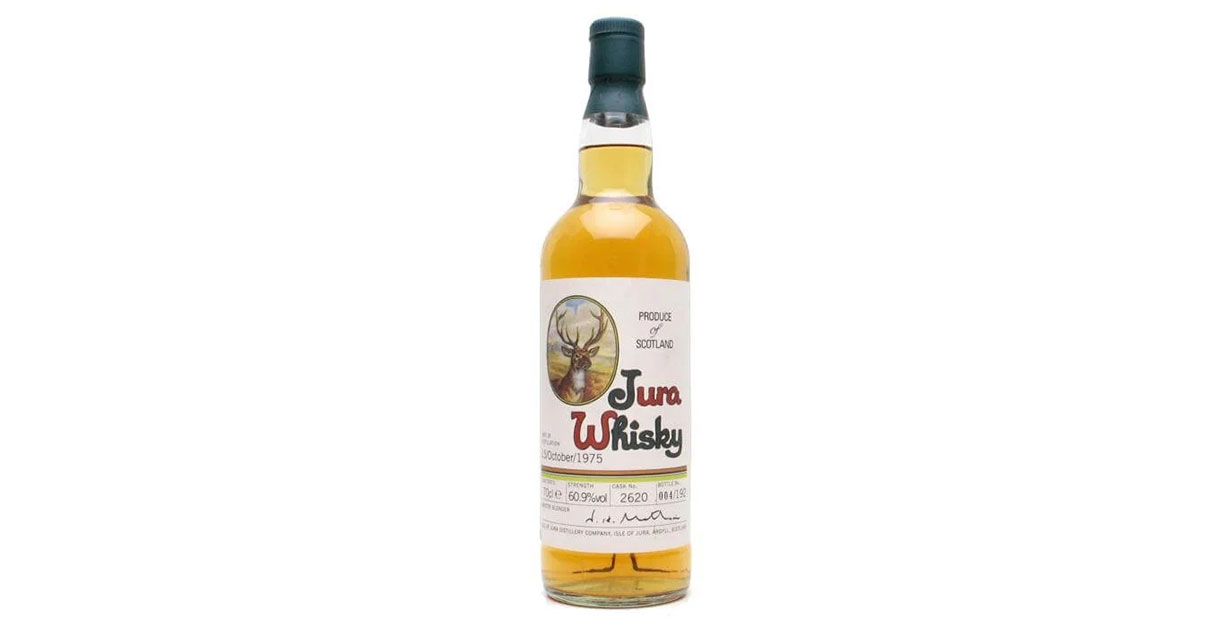
In the recently published 46th Edition of The Scotch Whisky Industry Review, by Alan Gordon, Jura is named as the best-selling single malt scotch whisky in the UK, with a 7.8% market share. This is the first time that Jura has held such a title. Certainly, living in the UK myself, I always notice the bottles of Jura on the shelves when walking around the supermarket.
Whilst it seems that Jura is yet to crack the rest of the world (The Glenlivet remains the best-selling single malt scotch in the world), there is no doubt that the island distillery has seen a rise in popularity in recent years.
In celebration of Jura’s achievement, I thought that we would take a look at the highest-scoring Jura on WhiskyFun for this week’s installment of Scotch Whisky Legends.
The Isle of Jura 1975 Matthew Forrest Collection #2620
The Isle of Jura 1975 Matthew Forrest Collection was distilled just one year after the brand’s first appearance as a single malt in 1974. The 1960s and 70s saw a period of growth for Jura, and therefore increased confidence in laying down casks for long-term maturation.
Distilled on 15th October 1975, the whisky matured for 28 years before bottling at a very impressive cask strength of 60.9% ABV around 2003. The whisky was bottled from a single cask #2620. Only 192 bottles were produced.
The cask was selected for bottling by Matthew Forrest. Forrest, an American of Scottish descent, had an unparalleled palate which he used to select and import single malt scotch to the US. Traveling to Scotland on a regular basis, he became a big fan of Jura whisky. According to Serge Valentin of WhiskyFun: “Matthew Forrest was specialised in sourcing ‘official’ casks for the Japanese market. I think it’s him who revealed the famous very young peated Juras to the world.”
Serge Valentin’s Tasting Notes on the Isle of Jura 1975 Matthew Forrest Collection #2620
Serge Valentin sampled the Jura 1975 Matthew Forrest on August 8th, 2007.
“Colour: straw.
“Nose: this one starts all on grass and coffee and that may well be the high alcohol. Also whiffs of wet newspaper of the day (lots of ink) and shoe polish, but it’s a bit pungent, let’s add water right away. An extreme saponification takes place. In case you don’t know yet, sometimes adding water to whisky will create smells of soap (and heat) so it’s better to wait a bit before you go on with your nosing, as those smells should quickly vanish. That’s exactly what happens here, leaving room for more rather beautiful fresh fruits (now I get mangos, papayas, quinces) as well as something very coastal such as very fresh fish, very fresh oysters, kelp… Also quite some fresh almonds. Keyword: fresh, you got it. And superb.
“Mouth (neat): extremely powerful but also hugely fruity (various apples including their skins, grapefruits), getting very citrusy, sharp like a blade, acrid in a nice way. This one really fires on all (twelve) cylinders, but it’s a bit too untameable.
“With water now (at roughly 45%): oh yes, it got even more citrusy (always these lemons and grapefruits but also tangerines and oranges). Beautiful notes of Turkish delights (not the ones for cheap tourists), mangos again, then soft spices (cloves as often with Jura, although we know that should come from the wood, not from the spirit)… Truly superb.
“Finish: long, on roughly the same style except for an added saltiness. A great ‘naked’ Jura, extremely classy.
Good work Mr Forrest. 91 points.” – Serge Valentin, WhiskyFun.com, 2007
Auction Prices (or a lack thereof)
Given that just 192 bottles of this whisky were produced, it will come as no surprise that it is extremely rare at auction. In fact, I can find only one record of a sale, in 2017 for £400.
A Brief History of Jura Distillery
Jura Distillery, nestled on the Isle of Jura, Scotland, has a rich history intertwined with the island’s rugged beauty. The distillery’s origins date back to 1810 when it was founded by Archibald Campbell. Despite its early establishment, Jura struggled with production and was mothballed multiple times throughout the 19th and early 20th centuries.
Revitalization began in the 1960s when two local estate owners, Robin Fletcher and Tony Riley-Smith, sought to revive the island’s whisky production. They collaborated with renowned whisky architect William Delmé-Evans, who redesigned and rebuilt the distillery in 1963. This marked a turning point, as Jura began to produce distinctive single malts, characterized by a unique combination of peated and unpeated whiskies.
Jura’s whisky gained acclaim for its smooth, approachable style with a touch of maritime influence, owing to its coastal location. Over the decades, the distillery expanded its range, offering expressions like Jura 10, Superstition, and Prophecy.


